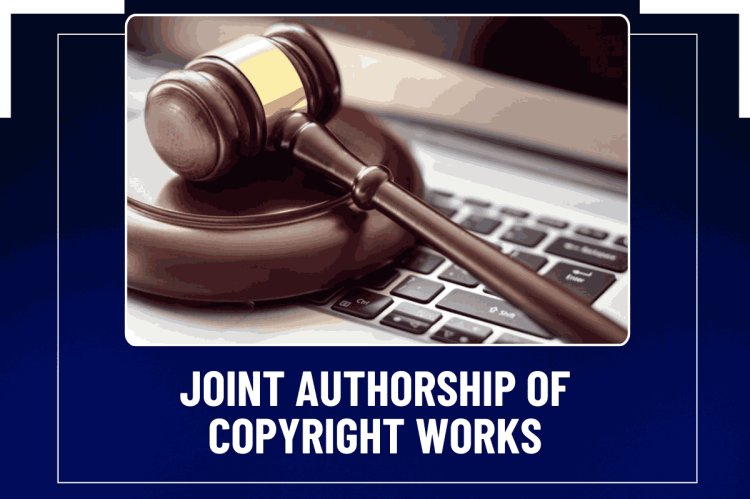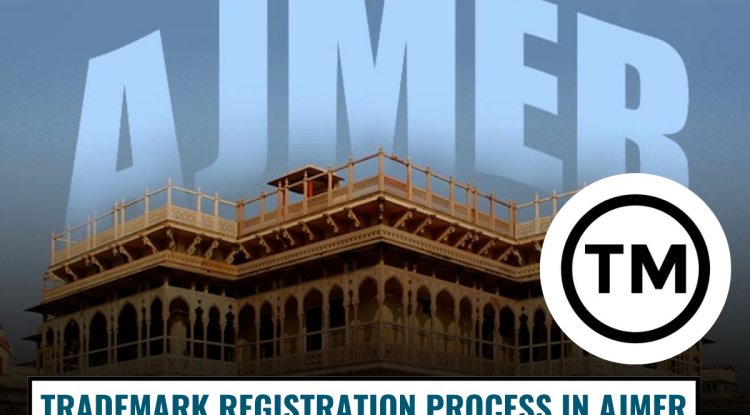Joint Authorship of copyright works.
A crucial element of copyright law that establishes ownership, rights, and control over creative works created by several producers is joint authorship. The idea, legal requirements, and ramifications of collaborative authorship are examined in this article. It looks at issues with purpose, contributions, and conflicts, how courts decide joint ownership, and the legal advantages that joint authors can have. The article offers insights into how legal frameworks address problems resulting from cooperation through real-world instances. The conclusion emphasises the necessity of clear agreements to prevent disputes and guarantee equitable distribution of rights and income.

INTRODUCTION
Several people frequently collaborate to create literary, musical, artistic, or other works that are eligible for copyright protection in this age of collaborative innovation. However, the idea of shared authorship introduces a number of complications, particularly when figuring out revenue sharing, creative control, and ownership rights. Since authors are granted exclusive rights by copyright law, identifying shared authors may cause conflicts and legal issues.
This article explores the basic principles of co-authorship, including the requirements that must be fulfilled, the duties that co-creators share, and the legal ramifications of co-authorship. We also discuss the difficulties in establishing joint authorship and the significance of explicit agreements in preventing disputes.
JOINT AUTHORSHIP
Although it's simple to explain, the term "joint authorship" is frequently difficult or unclear to understand. However, the concept is important since it determines a number of other factors that are related to it.
A legal definition of "joint authorship" can be found in the Copyright Act 1957 (According to this definition, it is defined as “a work produced by the collaboration of two or more authors in which the contribution of one author is not distinct from the contribution of the other author or authors.”
A work created by multiple writers working together and whose efforts are equivalent to each other's is considered a work of joint authorship under the Copyright Act. According to India's copyright laws, an author is, first and foremost, the sole owner of a work that can be authored. Publishers can obtain ownership rights to an author's work in a number of ways, even if the author may initially have exclusive control over the material.
The two most popular methods are the "assignment" of rights from the author to the publisher, where the author transfers "all or some" of the rights related to the work to the publisher, and the "work made for hire" doctrine, where the publisher asserts ownership and "all" rights in the creative work. Joint Authorship implies a sharing of rights because multiple people participate in the writing process. Therefore, if the publisher is a co-author, the publisher's entire ownership of the rights to the authorship work is intentional rather than accidentally lost.
In Angath Arts Private Limited v. Century Communications Ltd. and Anr, the court held that the "joint owner of a copyright could not, without the consent of the other joint owner, grant a licence or interest in the copyright to a third party." However, Indian courts have yet to define the term "joint authorship." Additionally, it noted that each writer must individually satisfy the basic conditions of copyright in any situation where they collaborate to create information that has to be protected by copyright, often known as joint authorship. Like any other author, the co-authors are entitled to the same rights. They are entitled to an earnings account, damages, and injunctions. The project will be owned equally by each co-creator. Whether or not one of the co-creators has put up a larger percentage of effort than the other. The finished work will be the "common" interest of each co-creator. No creator may grant exclusive rights for their work to any other party without the consent of their fellow creators. Each co-creator is responsible for recording any profits made by other co-owners using the protected property. One of the co-creators can choose to give their ownership share of the work to a third party or to their next generation. Equivalent credit will be given to each co-creator when their work is published or distributed. The author who passes away last is also given the copyright duration for the joint authorship work.
LEGAL CRITERIA FOR JOINT AUTHORSHIP
1) Intent to create a joint work- The authors of a work must agree that their combined efforts will produce a single, cohesive work in order for it to be considered collaboratively produced. Courts seek proof that the creators agreed with one another, either explicitly (via contracts) or implicitly (through their conduct during the creative process).
2) Significant contribution - The contribution of each author must be substantial enough to be considered a component of the work as a whole. The requirements for shared authorship are not met by insignificant contributions or simple recommendations. Crucially, the contributions must be complementary to one another in order to create an inseparable or interdependent whole, as is the case with joint novels, songs, and movies.
3) Inseparability and interdependence- Joint authorship requires that the individual parts cannot stand independently or that the work's meaning relies on the interplay of each author’s input. For example, in the case of a co-written screenplay, the narrative structure and dialogue are inseparable elements that rely on each author’s contribution
JOINT AUTHORSHIP AND PUBLISHERS
Only authors may be subject to the joint authorship theory, but publishers are also impacted because they are the authors of works produced as works made for hire. In the event that the publisher is not the "sole" author of a work produced as a work made for hire, the publisher will be subject to the shared authorship doctrine.
Commissions from publishers are considered work done for hire in situations when the publisher may not be the only author. However, the publisher does not meet the requirements of the notion of work-made-for-hire.
Only the author or authors would possess the rights to the work unless the publisher and the author or authors had a written agreement in which the publisher granted the author or authors rights, including copyright ownership of the work.
RIGHTS AND RESPONSIBILITIES OF JOINT AUTHOR
1) Equal Ownership
Unless stated otherwise in an agreement, joint authors generally own the copyright equally, regardless of their individual contributions. This means that each joint author has the right to license the work or exploit it for commercial gain, provided that the profits are shared with the other authors.
2) Right to Licensing and Commercialization
Any joint author can grant licenses to third parties to use the work, but the profits must be divided among all authors. However, certain jurisdictions may require unanimous consent for exclusive licenses, which makes collaboration agreements essential to avoid potential disputes.
3) Moral Rights
In many countries, joint authors have moral rights that protect their reputation and association with the work. Moral rights typically include the right of attribution (being recognized as an author) and the right to object to derogatory treatment of the work.
CHALLENGES IN JOINT AUTHORSHIP
1) Disputes over contributions- Disputes about the type and volume of each contributor's input are among the most frequent problems. While some artists might claim that they played a key role in the finished creation, others can overestimate their own efforts. To ascertain contributions, courts frequently need concrete proof, such drafts or correspondence logs.
2) Absence of written agreements- Courts use evidence to ascertain the intent of collaborative authorship where there is no written agreement. This frequently results in ambiguities, particularly when inferred understandings or spoken agreements are insufficient to prove authorship.
3) Disputes over revenue sharing- Disputes over revenue-sharing are another common problem. When distributing the earnings from the work's commercialisation, disputes may occur even if all authors agree on their contributions. In the absence of clear revenue-sharing guidelines, disputes could turn into court cases.
4) Unilateral licensing issues- Conflicts can occur when one author signs a licensing deal without first consulting the other authors, as joint authorship gives each author the authority to provide a license for the work. The other authors may suffer monetary loss or harm to their reputation as a result.
Najma Heptulla v. Orient Longman Ltd. And Ors. In this, royalties were split between the Indian Council of Cultural Relations and the estate of one of the deceased author, Maulana Azad. However, the Plaintiff argued that there could be no publication of this book as the copyright was theirs alone. In retaliation, the defendants argues that as per a prior agreement, the book in question was a work of joint authorship between Maulana Azad and Humayun Kabir. As Maulana Azad was deceased, Humayun Kabir’s permission was enough to proceed with the publishing.
CONCLUSION
Joint authorship plays a vital role in fostering creative collaboration, but it also introduces complexities in terms of ownership, licensing, and revenue-sharing. While copyright law provides a framework for identifying joint authorship, the lack of formal agreements can lead to disputes over contributions and profits. Creators must ensure that they clearly define their roles, responsibilities, and intentions to avoid legal challenges. Ultimately, establishing collaborative agreements from the outset is key to safeguarding the interests of all parties involved and ensuring that their joint efforts are fairly rewarded.












